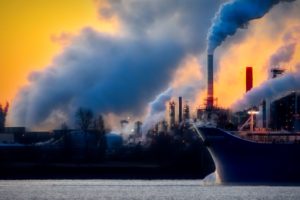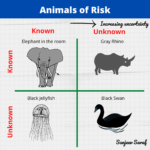Risk is a perception.
Our perception of risks is mainly affected by two factors:
(a) whether we are voluntarily accepting the risk.
A good example is a refinery worker considers the risks at workplace lower than his cousin who has only read about chemical plants; and
(b) potential consequences of event or act or decision.
For a layman, judging a risk is often a function of catastrophic potential. For example, working in a nuclear plant is considered riskier than driving on the road, whereas statistics show that more people are killed every year in automobile crash than in accidents in nuclear plants.
The higher the perceived risk by the people the more is the demand to reduce such a risk, and consequently more people want to see stricter regulations to reduce risk.
As a result it piques interest from government, regulatory bodies, and policy makers and there is an increased incentive to have a regulatory oversight.
You can see the above phenomenon in action with the US Chemical Plant Security.
When a layman thinks of a terror threat to a refinery, he commonly considers the blowing up of a refinery with a Bazooka and the consequences are dramatic. Therefore, there is more interest amongst the public with respect to reducing such risks and the regulators responded with Chemical Facility Anti Terrorism Standard (CFATS).
What will (has) CFATS achieve? – More guns, gates and guards!!!
How many terrorist attacks on chemical plants have you heard about?
Has CFATS addressed the Bazooka scenario? – Can guns, gates or guards prevent a Bazooka?
Has it addressed the concern amongst people about terror threat to chemical facilities? YES!
There are many other attractive targets such as gas pipelines, water infrastructure that have a threat from a deliberate act; however, they do not paint grave enough consequences to mandate an immediate regulatory action. Pound-for-pound an attack on water infrastructure poses significantly higher risks than a chemical facility…it just does not conjure up gory images.
Perception of future risks affects regulations and these perceived risks get magnified due to uncertainties and misinformation.
Will there be a fire/explosion/dust explosion in a chemical facility this year? Will there be a gas pipeline incident this year?
The answer to the above questions is yes.
Yet, where do you see new regulations…chemical security.
As a reader you may comment that I am stating the obvious that regulations are prioritized based on their potential impact and stakeholder interests. Even if this is obvious, I believe it is worth reinforcing because a society’s progress is often determined by the risks it is willing to accept.
If public feels vulnerable to certain risks they will become risk averse to newer technologies or changes. Granted there may be risks involved but there are benefits associated with the risks. Without a clear idea of risk acceptance-benefit-cost, regulators are bound to be torn between unsatisfied fearful public and frustrated technologists.
The manner in which this conflict gets resolved will affect fate of societies and future generation; and yet the outcome of proposed regulations is probably governed by short-term political interests.
Without a risk acceptance criteria and a prudent risk analysis framework, any future safety regulation will be a biased one.
A safety standard has to take into account risks/benefits/uncertainty.






2 Responses